
Fewer inflatable rafts and kayaks set out from Port Huron and Sarnia Sunday for this year’s St. Clair River Float Down.
The unsanctioned event was attended by dozens of rescue boats from both the Ontario and Michigan sides of the river, as well as a US Coast Guard helicopter that flew overhead.
Typically, thousands of mostly US participants take part in the annual event held on the third Sunday in August.
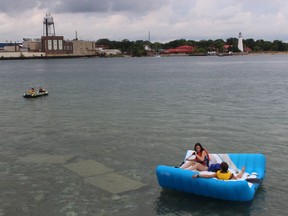
Kathleen Getty, deputy search and rescue superintendent with the Canadian Coast Guard, estimated this year the numbers were between 500 and 1,000.
“It’s probably one of the smaller” turnouts for the annual event, she said.
“Everything’s going pretty smooth,” Getty said just before 4 pm
There were no significant issues, at that point, she said. “It has been pretty calm and quiet.”
const. Giovanni Sottosanti, with the Sarnia police, was watching from shore Sunday at about 1 pm, and said numbers appeared to be down.
“I’m thinking there’s 50 to 60 people” entering the water on the Canadian side at that point, he said.
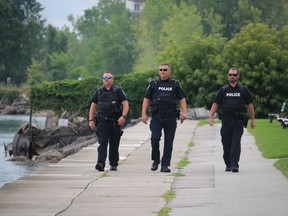
The number of floaters leaving from the US beach also appeared smaller than in the past, Sottosanti said.
Skies were overcast, with a chance of rain and thunderstorms in the forecast Sunday afternoon.
“We’re anticipating a smaller turnout than in years past, given the weather forecast,” said Jeremy Hennessy, a spokesperson with the Canadian Coast Guard, said earlier in the day.
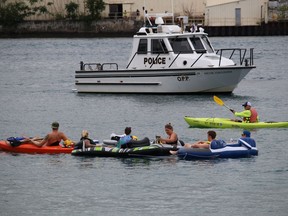
The weather didn’t deter John Stevens, a retired plumber from Sarnia, who set out from the shore next to the Lambton Area Water Supply System site in a kayak.
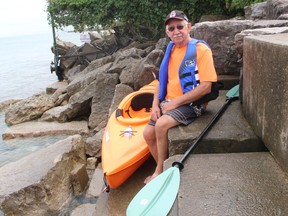
“It’s absolutely delicious,” he said about the overcast conditions Sunday. “I don’t like the sun.”
Stevens said it was his first float down, but added it’s something he has long wanted to do.
Stevens said he felt safe with the large number of Canadian and US rescue boats gathered in the lake and river.
He was planning to paddle and float as far as Corunna, where his brother was going to meet him and give him a ride back home.
Friends Karen Godin and Audrey Hunter of Sarnia left Sunday on their fourth float down.
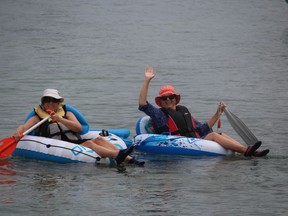
“It’s fun,” Godin said. “We both love the water. We’re a couple of mermaids.”
“If it stays like this, we’re gold,” Hunter said about the weather before noon when they left Sarnia, each in their own small inflatable raft.
They were also planning to float as far as Corunna.
Officials closed a section of the river Sunday afternoon and early evening to commercial and motorized traffic as a precaution.
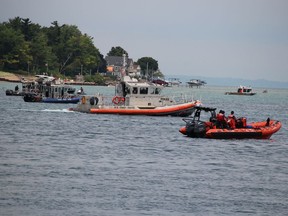
Canadian and US authorities urge the public each year to not take part in the float down, but to take steps to keep themselves safe if they do.
“We just want people to be very safe,” Sottosanti said. “This is an unsanctioned event but we know that it’s going to happen.”
He said they were watching for open alcohol and encouraging floaters to wear personal floatation devices.
The Canadian Coast Guard coordinated the response on the Canadian side of the river with the city police and fire service, Canada Border Services, the OPP and the RCMP. It also worked along with the US Coast Guard and the response on the Michigan side of the river.
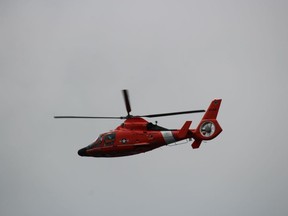
Most floaters leave from a beach in Port Huron, just north of the Blue Water Bridge, and float for approximately 12 kilometers to Marysville’s Chrysler Beach.

Smaller numbers of participants enter the water at the water treatment plant in Sarnia on Lake Huron and make the trip down the Canadian side.
In 2014, a 19-year-old died during the float down while, in 2016, high winds pushed approximately 1,500 floaters to the Canadian shore. Most were US citizens without identification, money, cellphones or a ride home, so they had to be gathered up and processed by Canadian officials before being bused back to Michigan.
